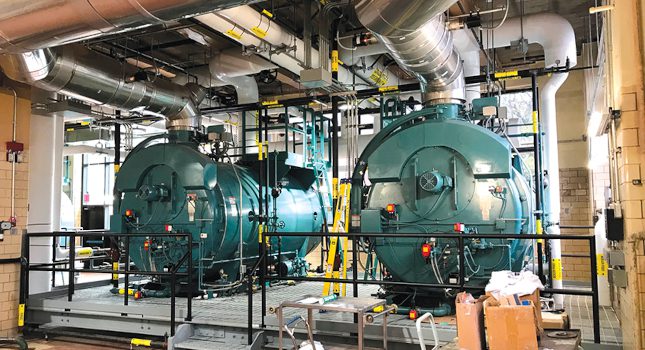You may think that boilers are now obsolete and that you should think of other more modern heating systems to heat your apartment. Think again; they have also benefited from technological advances and have been modernized along the way. Now updated, there is no shortage of innovations.
How the Boiler Works
Remember that the boiler is an equipment that allows transforming water into steam, thus providing thermal energy to heat a house. It is the main component of a central heating system and supplies heating appliances of the whole home.
It is then installed in a place where it can be easily supplied with fuel. You can put it in the garage, cellar, or basement. It works with wood, oil, or gas, depending on the type. These fuels go into the burner and produce heat. This heat will be captured by a liquid heat carrier, called heat transfer fluid, to be routed to the heat emitters such as radiators or floor heating through the heating circuit.
In most cases, the heat transfer fluid used is water. Therefore, the boiler also provides domestic hot water for the whole house. It is then sufficient to install a distribution circuit to the bathroom and kitchen. You choose for this installation if you want hot water in a quick way or by accumulation by using a hot water tank.
Innovations
The innovations in the field of boilers are to design completely ecological equipment. Therefore, all efforts are focused on reducing the device’s energy consumption. In this sense, the energy label changed again on March 1, 2021. This change is mainly due to the considerable evolution of these appliances in terms of performance. Indeed, most of the appliances arrived in the A classification, and we had to use A+, A++, and A+++ to decide. This new energy label raises the scale so that no device currently on sale is not classified A. All older models are then listed in class B or C. This strategy aims to push manufacturers to further reduce these appliances’ energy consumption and promote eco-design, repairability, and recyclability.
The most striking of these innovations is undoubtedly the hybridization of the boiler. There are condensing gas boilers associated with heat pumps or condensing boilers coupled with solar panels. This system allows boosting the performance of the appliances considerably while saving money. You can then reduce your energy consumption by 40%. In addition, the ecological impact is minimal because carbon dioxide emissions are reduced.
Since one of the most significant drawbacks of the boiler is its size, manufacturers have focused on compact models. You can now get boilers that do not exceed even 30 cm in depth. This makes them easy to transport and install because they can slip into the corners of the house without imposing. Plus, their sleek design blends in perfectly with your home decor.

